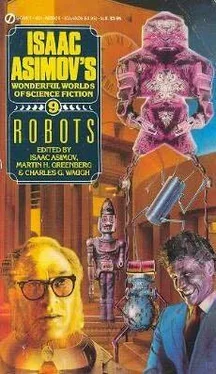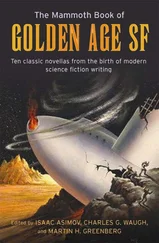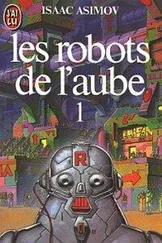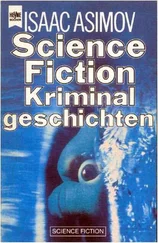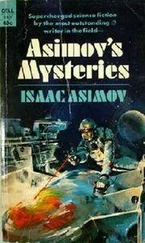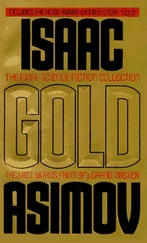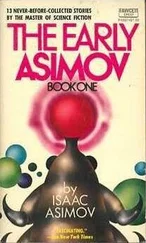Frederik Pohl - Isaac Asimov's Worlds of Science Fiction. Book 9 - Robots
Здесь есть возможность читать онлайн «Frederik Pohl - Isaac Asimov's Worlds of Science Fiction. Book 9 - Robots» весь текст электронной книги совершенно бесплатно (целиком полную версию без сокращений). В некоторых случаях можно слушать аудио, скачать через торрент в формате fb2 и присутствует краткое содержание. Год выпуска: 1989, ISBN: 1989, Издательство: Robinson Publishing, Жанр: Фантастика и фэнтези, на английском языке. Описание произведения, (предисловие) а так же отзывы посетителей доступны на портале библиотеки ЛибКат.
- Название:Isaac Asimov's Worlds of Science Fiction. Book 9: Robots
- Автор:
- Издательство:Robinson Publishing
- Жанр:
- Год:1989
- ISBN:ISBN: 1-85487-041-6
- Рейтинг книги:4 / 5. Голосов: 1
-
Избранное:Добавить в избранное
- Отзывы:
-
Ваша оценка:
- 80
- 1
- 2
- 3
- 4
- 5
Isaac Asimov's Worlds of Science Fiction. Book 9: Robots: краткое содержание, описание и аннотация
Предлагаем к чтению аннотацию, описание, краткое содержание или предисловие (зависит от того, что написал сам автор книги «Isaac Asimov's Worlds of Science Fiction. Book 9: Robots»). Если вы не нашли необходимую информацию о книге — напишите в комментариях, мы постараемся отыскать её.
Isaac Asimov's Worlds of Science Fiction. Book 9: Robots — читать онлайн бесплатно полную книгу (весь текст) целиком
Ниже представлен текст книги, разбитый по страницам. Система сохранения места последней прочитанной страницы, позволяет с удобством читать онлайн бесплатно книгу «Isaac Asimov's Worlds of Science Fiction. Book 9: Robots», без необходимости каждый раз заново искать на чём Вы остановились. Поставьте закладку, и сможете в любой момент перейти на страницу, на которой закончили чтение.
Интервал:
Закладка:
He's a brave bastard, but he's dumb. He doesn't have a chance. What does he think took my head off my shoulders? As soon as my saviours see a hairy savage in a robrob skin coming at them, they open fire. Two beamers at once. Before he takes his third step, he's in three pieces.
Well, that's not as bad as me. Counting everything, I'm now in seven pieces. But I can be fixed.
Sun Up
by A.A. Jackson IV and Howard Waldrop
The robot exploration ship Saenger parked off the huge red sun.
It was now a tiny dot of stellar debris, bathed in light, five million nine hundred ninety-four thousand myriameters from the star. Its fusion ram had been silent for some time. It had coasted in on its reaction motors like a squirrel climbing down a curved treetrunk.
The ship Saenger was partly a prepackaged scientific laboratory, partly a deep space probe, with sections devoted to smaller launching platforms, inflatable observatories, assembly shops. The ship Saenger had a present crew of eighteen working robots. It was an advance research station, sent unmanned to study this late-phase star. When it reached parking orbit, it sent messages back to its home world. In a year and a half, the first shipful of scientists and workers would come, finding the station set up and work underway.
The ship was mainly Saenger, a solid-state intelligence budded off the giant SSI on the Moon.
Several hours after it docked off the sun, Saenger knew it was going to die.
There was a neutron star some 34 light-years away from Saenger, and 53 light-years away from the earth. To look at it, you wouldn't think it was any more than a galactic garbage dump. All you could tell by listening to it was that it was noisy, full of X-rays, that it rotated, and that it interfered with everything up and down the wavelengths.
Everything except Snapshot.
Close in to the tiny roaring star, closer than a man could go, were a series of big chucks of metal that looked like solid debris.
They were arrays of titanium and crystal, vats of liquid nitrogen, shielding; deep inside were the real workings of Snapshot.
Snapshot was in the business of finding Ken wormholes in the froth of garbage given off by the star. Down at the Planck length, 10-35 cm, the things appeared, formed, reappeared, twisted, broke off like steam on hot rocks. At one end of the wormholes was Snapshot, and at the other was the Universe.
It sent messages from one end, its scanners punching through the bubbling mass of waves, and it kept track of what went where and who was talking to whom.
Snapshot's job was like that of a man trying to shoot into the hole of an invisible Swiss cheese that was turning on three axes at 3300 rpm. And it had to remember which holes it hit. And do it often.
There were a couple of Snapshots scattered within close range of Earth, and some further away. All these systems coordinated messages, allowed instantaneous communication across light-years.
All these communications devices made up Snapshot. Snapshot was one ten-millionth the function of Plato.
Plato was a solid crystal intelligence grown on the Moon, deep under the surface. The people who worked with Plato weren't exactly sure how he did things, but they were finding out every day. Plato came up with the right answers; he had devised Snapshot, he was giving man the stars a step or two at a time. He wasn't human, but he had been planned by humans so they could work with him.
"Plato, this is Saenger." » «(:)-(:)(:) 666* CCC XXXXX
"That's being sent. I have an emergency here that will cancel the project. Please notify the responsible parties." » «» «-' ()** "» «
"I don't think so. I'll tell them myself."
"(:)(:) amp; ' '
"I'll get back to you on that."
(:)
"Holding."
XXXXX PLATO TRANSFER SNAPSHOT re Saenger RUNNING
Doctor Maxell leaned back in her chair. The Snapshot printout was running and the visuals awaited her attention.
"Uchi," she said, "they'll have to scrub Saenger."
"I heard the bleep," said the slight man. He pulled off his glasses and rubbed his eyes. "Is Plato ready yet?"
"Let's see it together," she said. "It'll save time when we have to rerun it for the Committee."
They watched the figures, the graphics, the words. The printout ran into storage.
"Supernova," said Dr. Maxell.
"Well… first opportunity to see one close up."
"But there goes the manned part of the project. There goes Saenger."
"The Committee will have to decide what comes next."
"You want to tell them or should I?"
"Saenger, this is Dr. Maxell."
"Speaking."
No matter how many times she did it, Sondra never got used to speaking across light-years with no more delay than through an interoffice system.
"Saenger, the Committee has seen your reports and is scrubbing the remainder of your mission. The rest of your program will be modified. You're to record events in and around the star until such time as-your functions cease."
There was a slight pause.
"Would it be possible to send auxiliary equipment to allow me to leave this system before the star erupts?"
"I'm afraid not, Saenger. If the forces hold to your maximum predicated time, there's still no chance of getting a booster to you."
Saenger, like the other robot research stations, was a fusion ram. They used gigantic boosters to push them to ramming speed. The boosters, like shuttlecraft, were reusable and were piloted back to launching orbits. Saenger used its ram to move across vast distances and to slow down. Its ion motors were useful only for maneuvering and course corrections.
The reaction motors could not bring it to ramming speed.
The booster for its return journey was to be brought out on the first manned ship which would have come to Saenger.
The manned ship was not coming.
All this was implied in Doctor Maxell's words.
"Would I be of more use if I were to remain functioning throughout the event?"
"Certainly," she said. "But that's not possible. Check with Plato on the figures for the shock wave and your stress capabilities."
Slight pause.
"I see. But, it would be even better for scientific research if I survived the explosion of the star?"
"Of course. But there is nothing you can do. Please stand by for new programming."
There was another short silence, then:
"You will be checking on my progress, won't you?"
"Yes Saenger, we will."
"Then I shall do the best possible job of information-gathering for which I am equipped."
"You do that, Saenger. Please do that for us."
In Saenger's first messages, it told them what it saw. The spectroscopy, X-ray scans, ir, uv and neutrino grids told the same thing: the star was going to explode.
Saenger reached an optimum figure of one year, two months and some days. The research ship checked with Plato. The crystal intelligence on the Moon told him to knock a few months off that.
Plato printed a scenario of the last stages of the 18-solar-mass star. He sent it to Doctor Maxell. It looked like this:
— CORE COLLAPSE DUR. 5 h 24 min 18 sec SUPERNOVA no durational msmnt possible
Читать дальшеИнтервал:
Закладка:
Похожие книги на «Isaac Asimov's Worlds of Science Fiction. Book 9: Robots»
Представляем Вашему вниманию похожие книги на «Isaac Asimov's Worlds of Science Fiction. Book 9: Robots» списком для выбора. Мы отобрали схожую по названию и смыслу литературу в надежде предоставить читателям больше вариантов отыскать новые, интересные, ещё непрочитанные произведения.
Обсуждение, отзывы о книге «Isaac Asimov's Worlds of Science Fiction. Book 9: Robots» и просто собственные мнения читателей. Оставьте ваши комментарии, напишите, что Вы думаете о произведении, его смысле или главных героях. Укажите что конкретно понравилось, а что нет, и почему Вы так считаете.
